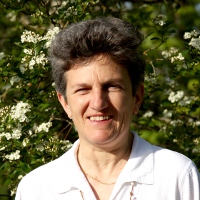To anticipate the rapidly changing world resulting from global climate change, the projections of climate models must be incorporated into conservation. This requires that the scales of conservation be aligned with the scales of climate-change projections. We considered how conservation has incorporated spatial scale into protecting biodiversity, how the projections of climate-change models vary with scale, and how the two do or do not align. Conservation planners use information about past and current ecological conditions at multiple scales to identify conservation targets and threats and guide conservation actions. Projections of climate change are also made at multiple scales, from global and regional circulation models to projections downscaled to local scales. These downscaled projections carry with them the uncertainties associated with the broad-scale models from which they are derived; thus, their high resolution may be more apparent than real. Conservation at regional or global scales is about establishing priorities and influencing policy. At these scales, the coarseness and uncertainties of global and regional climate models may be less important than what they reveal about possible futures. At the eco-regional scale, the uncertainties associated with downscaling climate models become more critical because the distributions of conservation targets on which plans are founded may shift under future climates. At a local scale, variations in topography and land cover influence local climate, often overriding the projections of broad-scale climate models and increasing uncertainty. Despite the uncertainties, ecologists and conservationists must work with climate-change modelers to focus on the most likely projections. The future will be different from the past and full of surprises; judicious use of model projections at appropriate scales may help us prepare.
Matching the Multiple Scales of Conservation with the Multiple Scales of Climate Change


